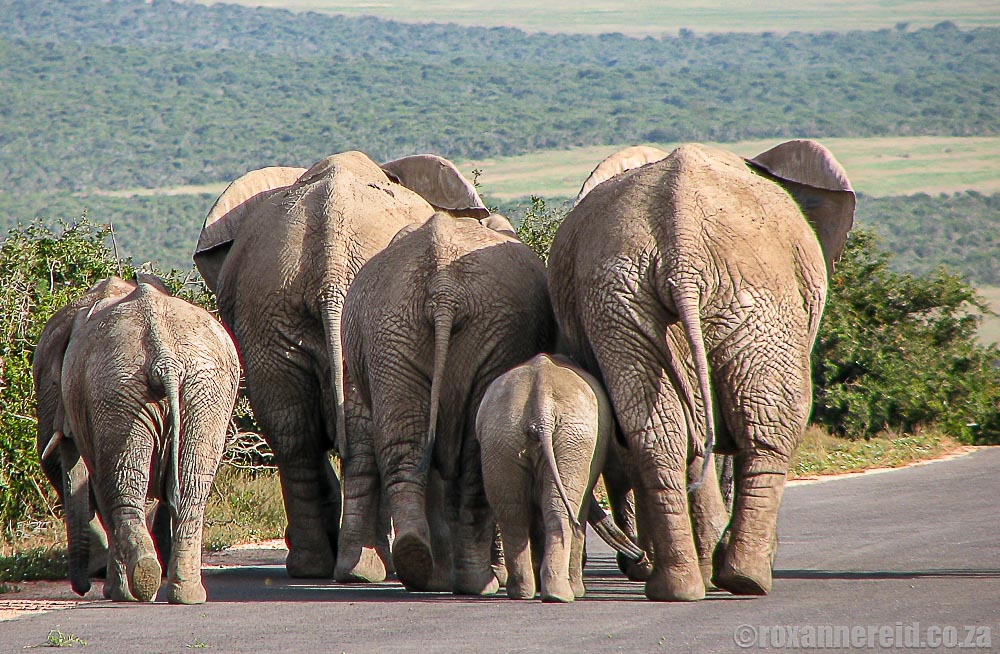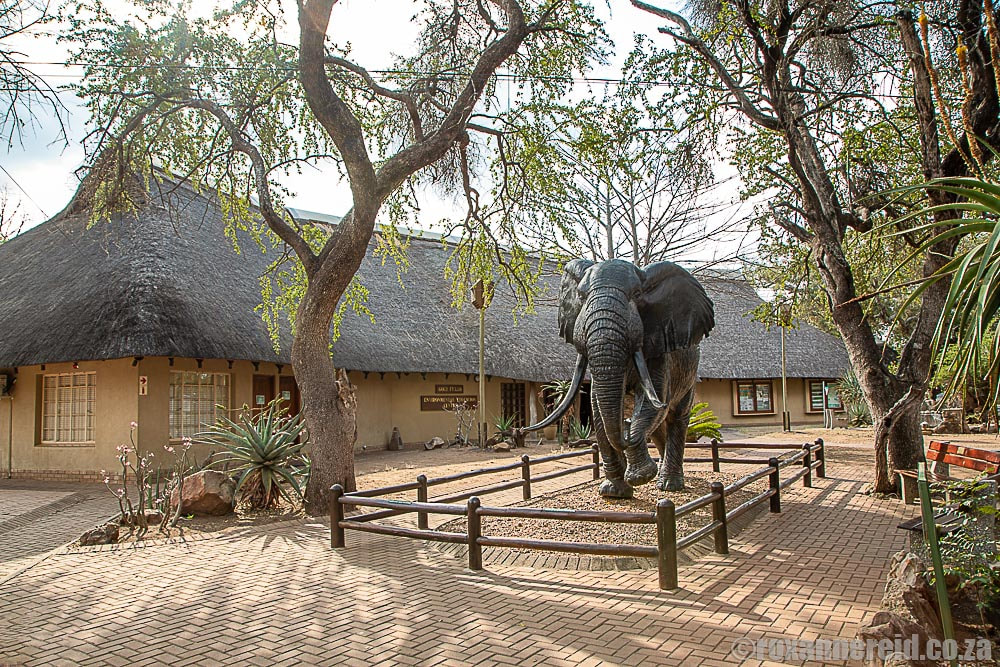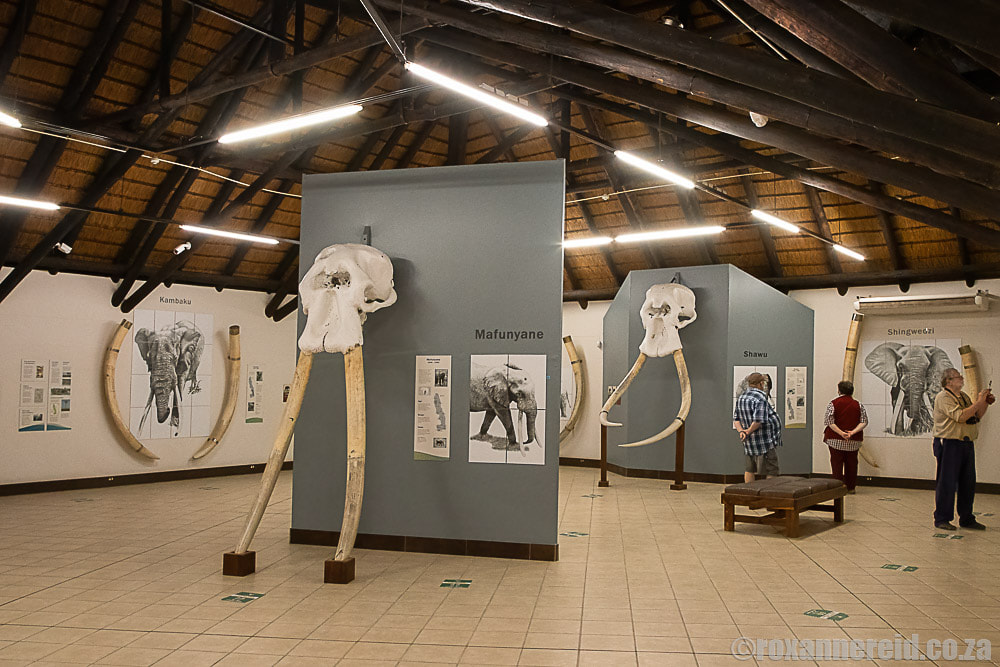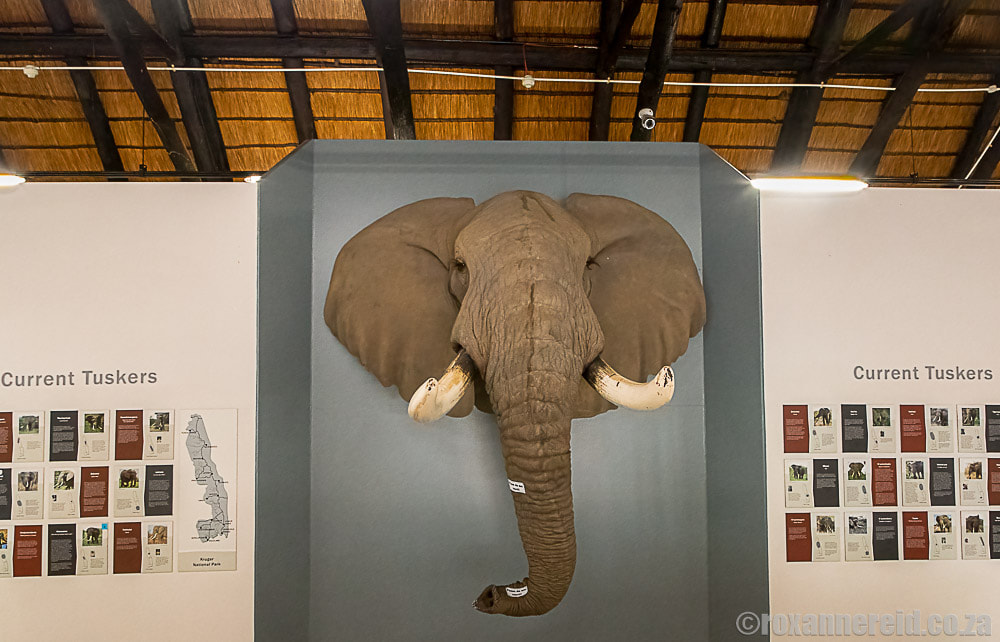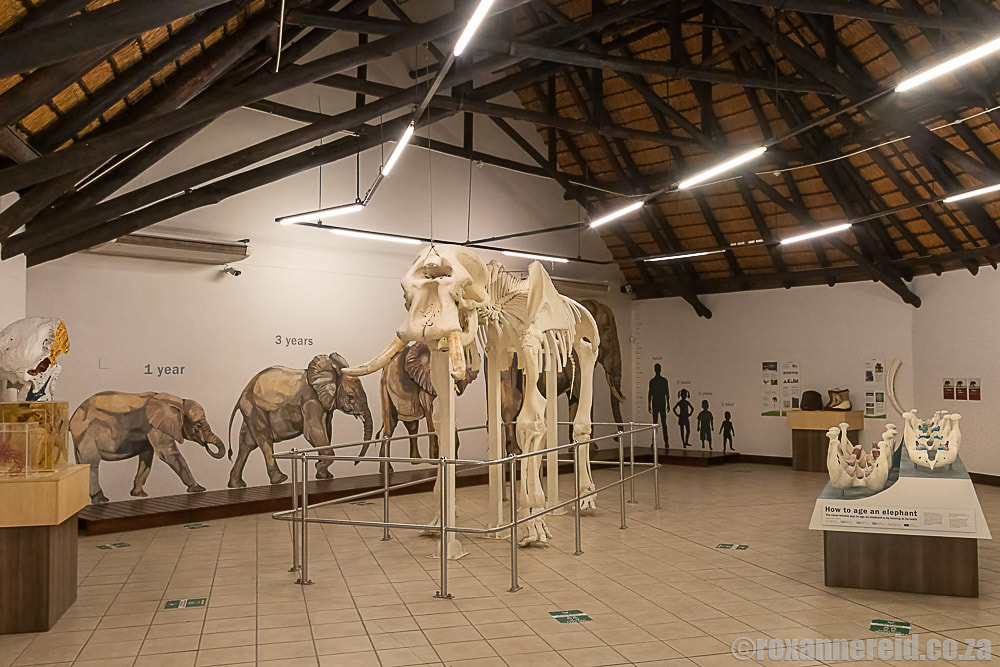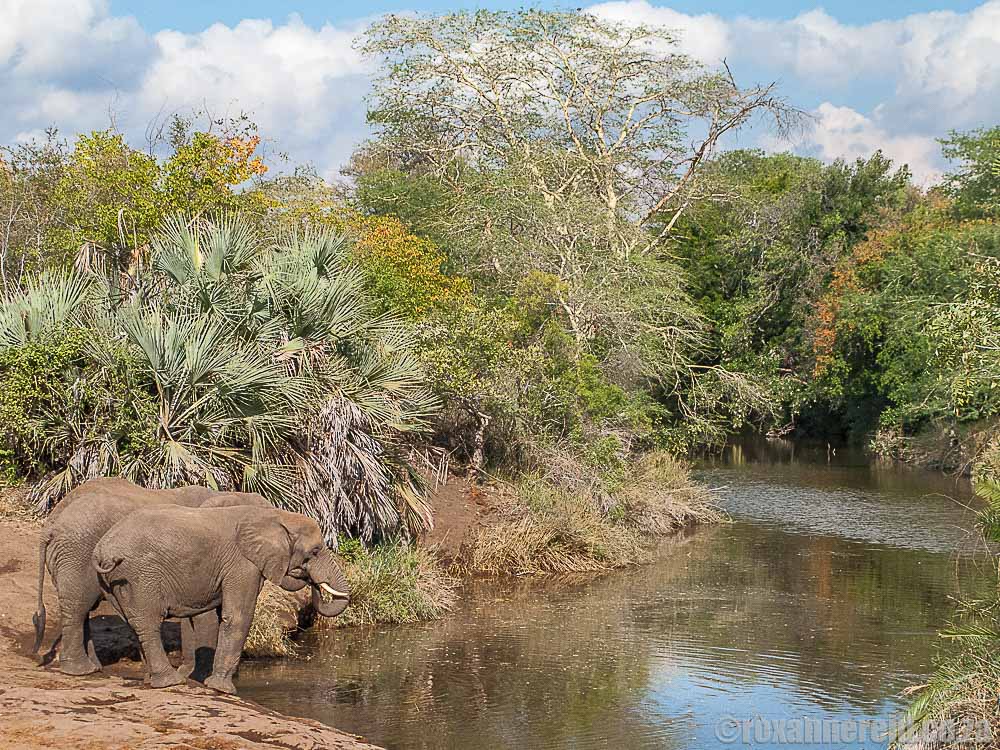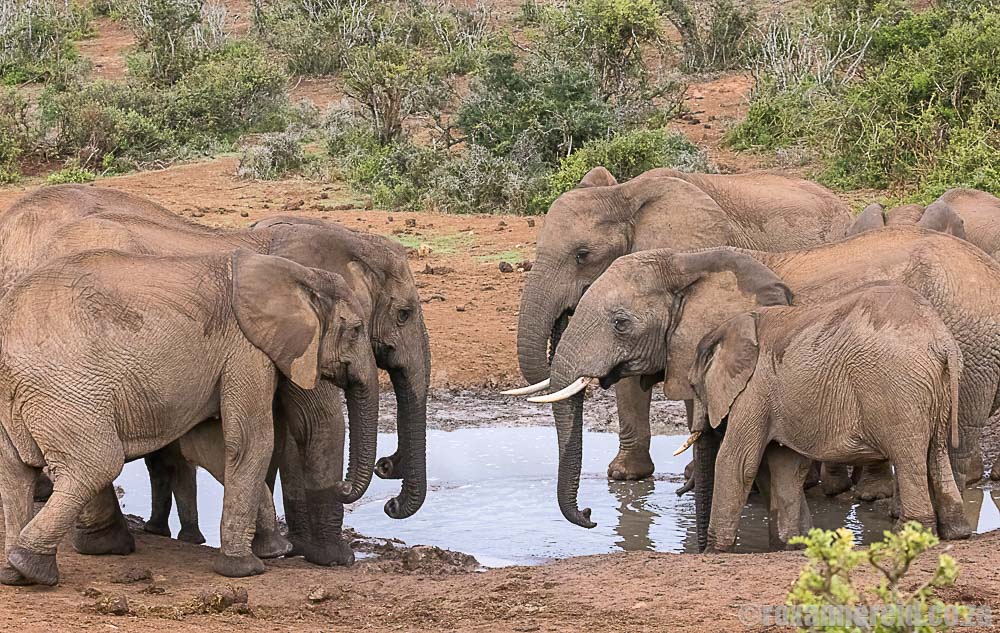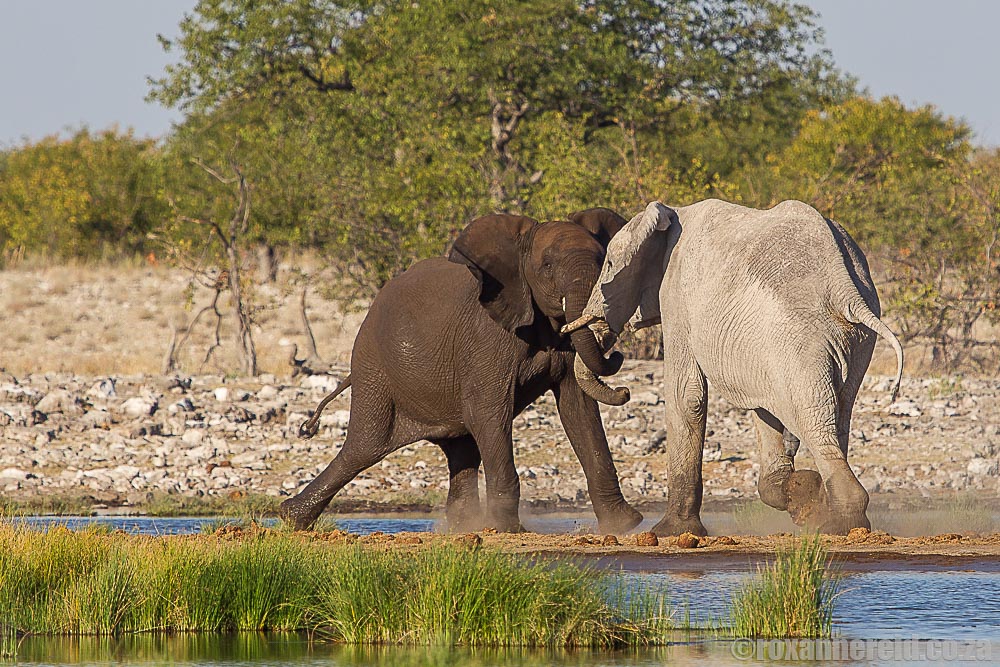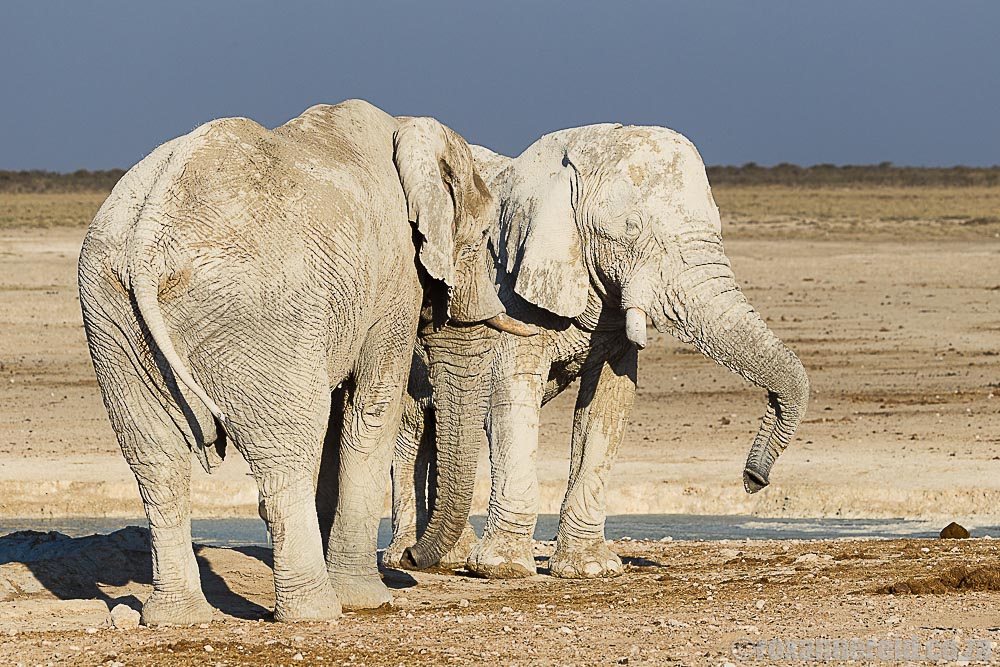By Roxanne Reid
I don’t know about you but elephants, especially the young and playful ones, are among my favourite animals to watch. I can do it for hours. To enhance your appreciation of these fascinating animals, find out some interesting facts about elephants when you visit Letaba rest camp in South Africa’s Kruger National Park.
The first time we popped in to the Letaba Elephant Hall, or info centre, at Kruger’s Letaba rest camp many years ago, we thought it might be a good way to cool down in air-conditioned luxury for 20 minutes, away from the heat and humidity outside (it had been 32 degrees and 80% humidity that day). What we discovered was a place that deserved much more detailed attention. Now we never miss a chance to return to remind ourselves of some elephant facts whenever we’re at Letaba.
1. An elephant’s heart weighs up to 28kg, which is more than an entire female Chacma baboon. Compare this to a scrawny 300g for a human heart. The elephant heart beats at only 25-30 beats per minute when it’s standing and a little higher when it lies down. By contrast, the average human’s heart beat is more than double that at around 70 beats per minute.
2. Given the distances that blood has to travel through the elephant’s massive body, blood vessels can be a whopping 3m long and the elephant needs to maintain a fairly high blood pressure to prevent the blood vessels from collapsing in on themselves. When standing, their blood pressure is around 178/119 whereas ours is about 120/80.
4. Elephants have the largest brains of any land mammal, weighing 4-6kg (compared to a puny 1.5kg for humans). The temporal lobes that are the memory centres are large, backing up the legend that elephants have good memories. Like humans, elephant babies have much smaller brains than adults. In newborns, elephant brains are about 35% of the size of an adult’s whereas in humans it’s 26% – both of them with a lot to learn and develop. Compare this to most newborn mammals, which have brains around 90% of the size of a full-grown adult’s.
5. Elephants’ eyes are about the same size as yours or mine and their sight is not their strongest sense, with a maximum range of about 50m.
7. A tusk is actually an upper incisor tooth that erupts at the age of about one year. Tusks are used for defence, to dig for water, salt or roots, to debark trees, and as a lever for lifting heavy objects (even new-born calves). In cross-section, there’s a geometric pattern of lines that follows a mathematical Fibonacci sequence. This is unique to elephants and doesn’t occur in the tusks of other animals (like warthogs, for instance).
8. What do elephants eat? 96.5% of their diet is grass, shrubs and small trees, and 3.5% leafy branches and bark. They spend 16 hours a day feeding and may eat between 150 and 170kg a day. Their digestive system isn’t very effective so about half of what they eat passes through the gut fairly undigested, providing food for other animals like baboons and insects. The seeds of some plants germinate much better once they have passed through an elephant’s gut.
9. What goes in must come out. Not surprisingly given how much elephants eat, they produce a large amount of dung. For instance, Smithers’ Mammals of Southern Africa notes that a 10-year-old female can generate about 100kg of dung in a day. The dung provides food and brood balls for some 780 species of dung beetle in Southern Africa.
11. An elephant molar is about the same size as a house brick. During an elephant’s life of up to around 60 years, they go through six sets of teeth which migrate forward along the jaw. Once the last set are lost, the animal can’t feed properly and dies of malnutrition.
12. The surface of the feet is flexible, allowing it to move surprisingly silently for such a large animal. In fact, you could say it tip-toes because the elephant’s weight rests on the tip of each toe and the fibrous cushion of cartilage that acts like a shock absorber. The front legs carry the weight of the head, tusks and trunk, which together make up 44% of the animal’s whole weight.
13. How fast can an elephant move? The average walking speed is 6-8km/h whereas they can pump that up to a top speed of 30-40km/h over short distances. In other words, if you were belting along on a 50cc motorbike, they’d be able to keep up with you. Although elephants can’t jump or run, you still can’t run away fast enough from a speed-walking elephant.
14. We tend to think of elephants as thick skinned, but in fact skin thickness varies from around 2.5cm on the back to just paper thin on the inside of the ears. Mud wallowing protects the skin against UV radiation, parasites and moisture loss.
16. When they are in musth – a state of heightened testosterone – bulls leave their home range looking to mate. Musth isn’t seasonal, but most bulls come into musth about once a year and it lasts from a few days to several months. You can recognise a musth bull by the secretion from the temporal gland between the eye and ear. They may also constantly dribble urine and be unusually grumpy and aggressive.
17. Before young cows have their own calves, they are the main caretakers of young calves. Called allmothers, they protect or help any calf in trouble and have a significant impact on calf survival compared to calves with no allmothers.
18. Pregnancy lasts almost 22 months and the calf weighs 120kg when it’s born – that’s as big as two full-grown women.
19. Elephants communicate by four different sounds – rumbling, bellowing, growling and trumpeting. Most of them are of such a low frequency that humans can’t hear them.
21. Elephants are highly social animals and live in family units of related females with their offspring, with a large matriarch in charge. From the age of around 12, bulls leave their family herds. They may be solitary or form small temporary bachelor herds. Young bulls of 10-15 years and up to 20 years spend more than 80% of their time away from their family unit.
22. Elephants have more impact on the environment than any animal other than humans. This is good when the number of elephants is in balance with the environment, For instance, they clear bush, create seedbeds and paths, dig wells, and bring food in reach of smaller animals. Where they are over-concentrated in parks, however, their destruction of trees can be a problem.

